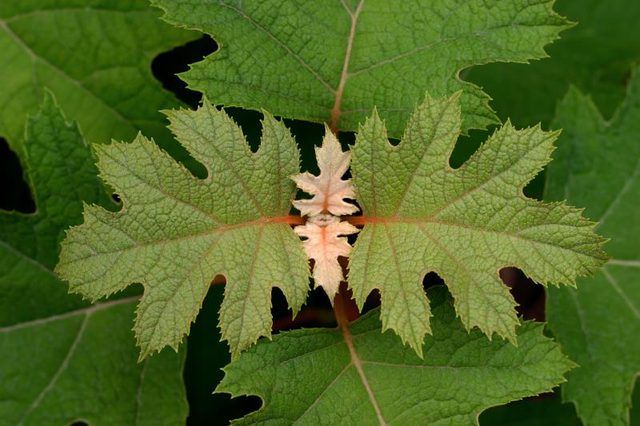Bulbs
Flower Basics
Flower Beds & Specialty Gardens
Flower Garden
Garden Furniture
Garden Gnomes
Garden Seeds
Garden Sheds
Garden Statues
Garden Tools & Supplies
Gardening Basics
Green & Organic
Groundcovers & Vines
Growing Annuals
Growing Basil
Growing Beans
Growing Berries
Growing Blueberries
Growing Cactus
Growing Corn
Growing Cotton
Growing Edibles
Growing Flowers
Growing Garlic
Growing Grapes
Growing Grass
Growing Herbs
Growing Jasmine
Growing Mint
Growing Mushrooms
Orchids
Growing Peanuts
Growing Perennials
Growing Plants
Growing Rosemary
Growing Roses
Growing Strawberries
Growing Sunflowers
Growing Thyme
Growing Tomatoes
Growing Tulips
Growing Vegetables
Herb Basics
Herb Garden
Indoor Growing
Landscaping Basics
Landscaping Patios
Landscaping Plants
Landscaping Shrubs
Landscaping Trees
Landscaping Walks & Pathways
Lawn Basics
Lawn Maintenance
Lawn Mowers
Lawn Ornaments
Lawn Planting
Lawn Tools
Outdoor Growing
Overall Landscape Planning
Pests, Weeds & Problems
Plant Basics
Rock Garden
Rose Garden
Shrubs
Soil
Specialty Gardens
Trees
Vegetable Garden
Yard Maintenance
How to Prune an Oakleaf Hydrangea
How to Prune an Oakleaf Hydrangea. Named for its oak leaf-shaped leaves, oakleaf hydrangea (Hydrangea quercifolia) offers long-lasting flowers, colorful fall leaves and shaggy bark. Hardy in U.S. Department of Agriculture plant hardiness zones 5 through 9, the deciduous shrub grows 6 to 8 feet tall and wide, and bears white panicles of flowers from...

Named for its oak leaf-shaped leaves, oakleaf hydrangea (Hydrangea quercifolia) offers long-lasting flowers, colorful fall leaves and shaggy bark. Hardy in U.S. Department of Agriculture plant hardiness zones 5 through 9, the deciduous shrub grows 6 to 8 feet tall and wide, and bears white panicles of flowers from late spring through early summer. Blooms remain on the shrub until fall, turning pink then tan. Oakleaf hydrangea can be pruned for size and shape as well as to remove dead wood, promote bushiness and remove faded flowers. Dip a cloth in rubbing alcohol, and use it to wipe pruning shear blades before and after pruning to avoid spreading pests and plant diseases.
Pruning for Shape and Size
Pruning oakleaf hydrangea for size and shape takes place after it finishes flowering. Because its flowers appear on wood that grew the previous year, pruning the shrub after it flowers avoids removing wood that will produce flowers the next year. Prune the shrub after the final flowers have begun to fade to pink. Cut stems and branches at their bases or above outward-facing leaves as needed to achieve the length you desire them to be as you size and shape the shrub. Also remove stems and branches that cross or spoil the shrub's overall shape.
Removing Damaged and Dead Wood
Cold winters sometimes damage oakleaf hydrangea branches and stems, and damaged areas should be removed. Pruning dead and damaged wood can take place any time of year, but wait until the shrub has leaves if you aren't sure which parts died. Scrape a piece of bark with a thumbnail to check whether or not a stem or branch is alive. Living wood is green below its bark. Remove dead, broken and diseased stems and branches. Prune them at their bases or at least 3 to 4 inches into living, healthy wood.
Pinching for Bushiness
Oakleaf hydrangea's sprawling habit can be controlled by pinching off its shoot tips. When new shoots are 4 inches long, use your thumb and forefinger to pinch off the final 1 inch of each shoot. Continue to pinch off 1 inch of 4-inch-long shoot tips until the shrub begins flowering. Remove only the shoot tips, not flowering shoots. Shoot tips are narrow and tapered, and flowering shoots are thick and rounded. Pruning oakleaf hyrdangea for size after it flowers also helps keep the shrub compact and dense.
Deadheading the Shrub
Removing oakleaf hydrangea's old, fading flowers can keep the shrub looking neat and tidy through the growing season. Removing spent flowers is called "deadheading." Prune oakleaf hydrangea flowers by using sterilized pruning shears. Remove the flowers at their bases any time of year, such as after they fade to pink or tan, as desired. Another option in areas that experience frosts is to leave the flowers on the shrub during winter. A frosty coating on the faded flowers provides a winter display.